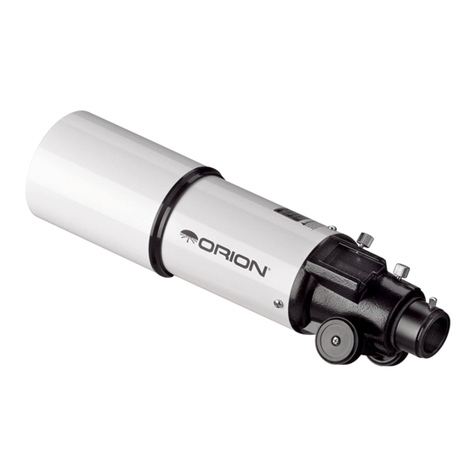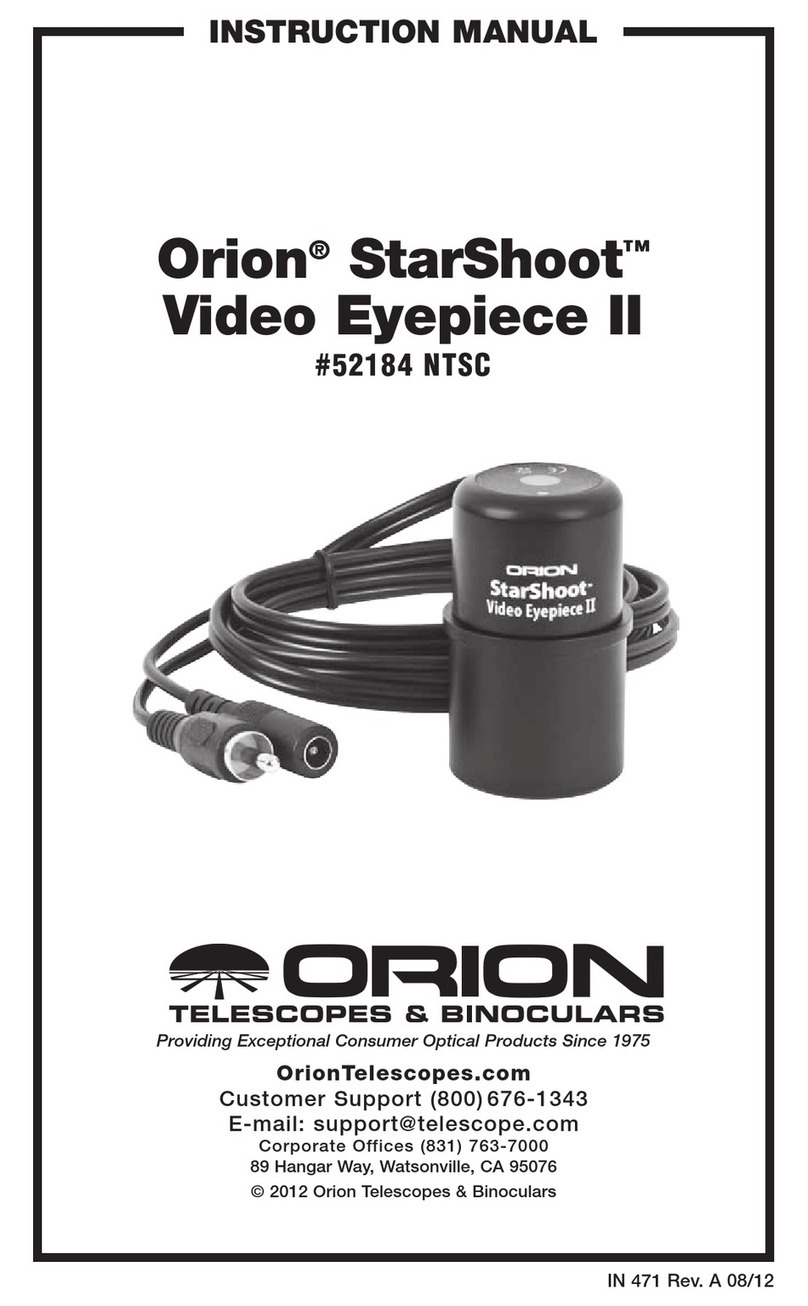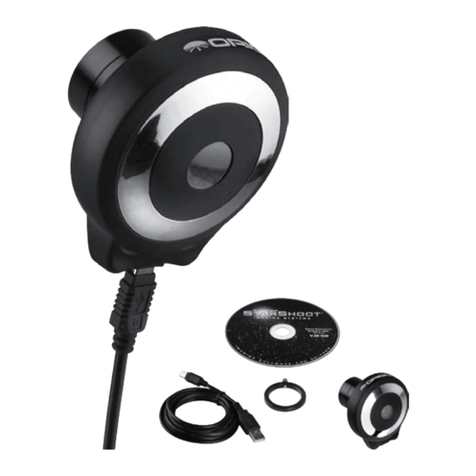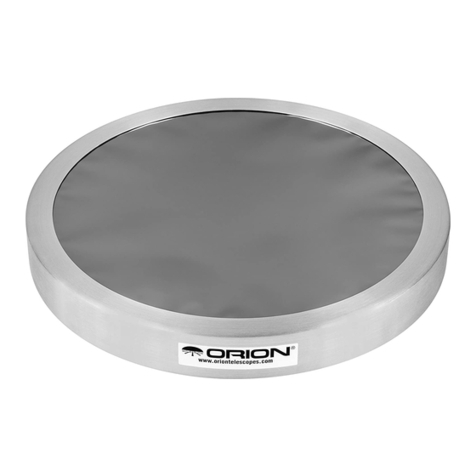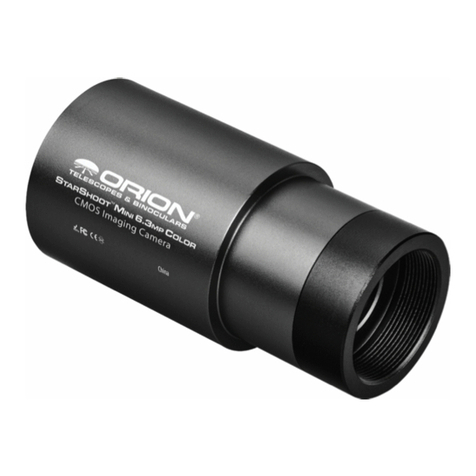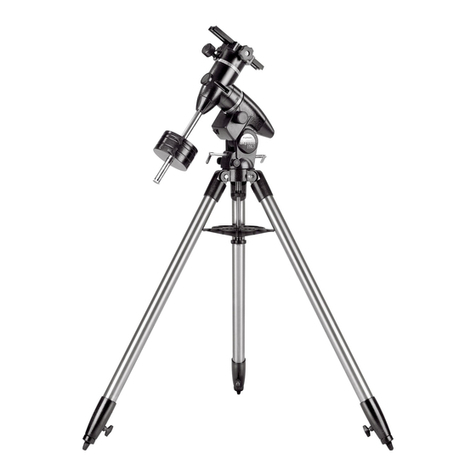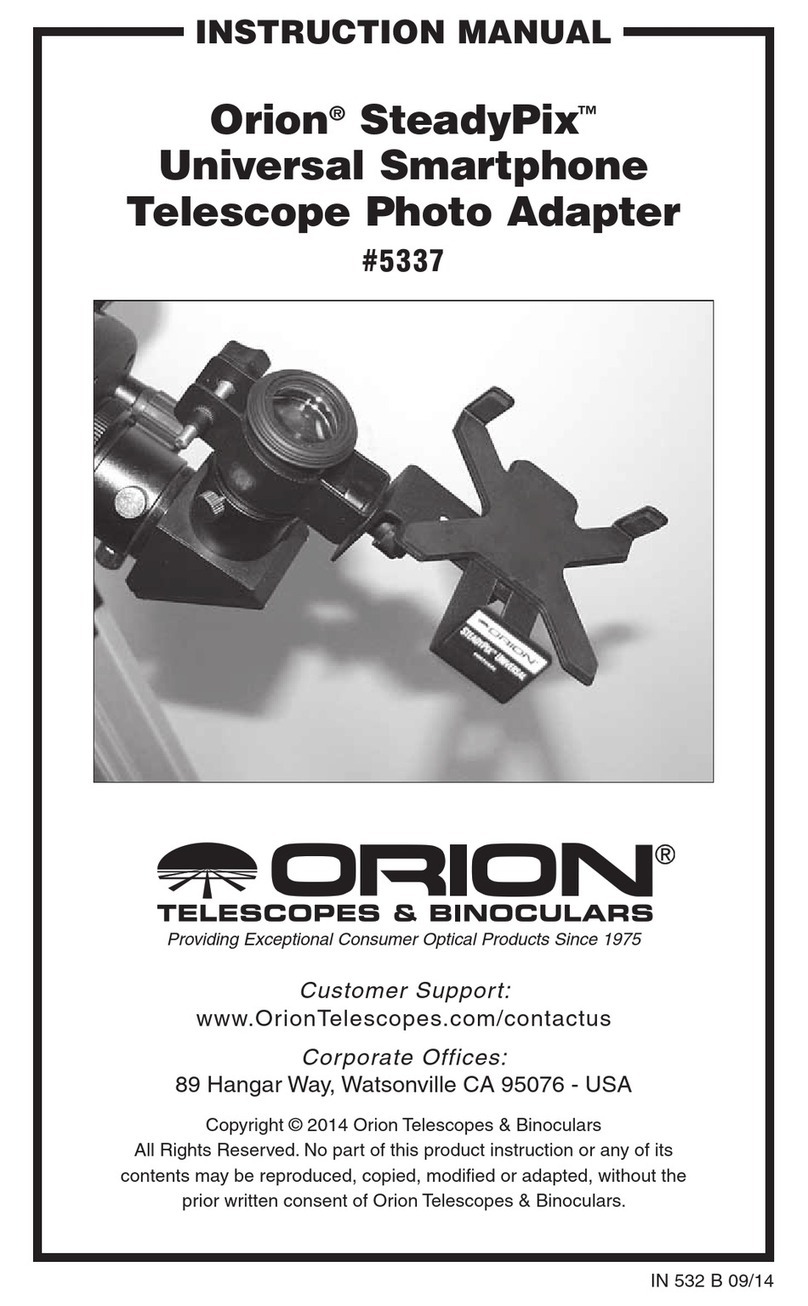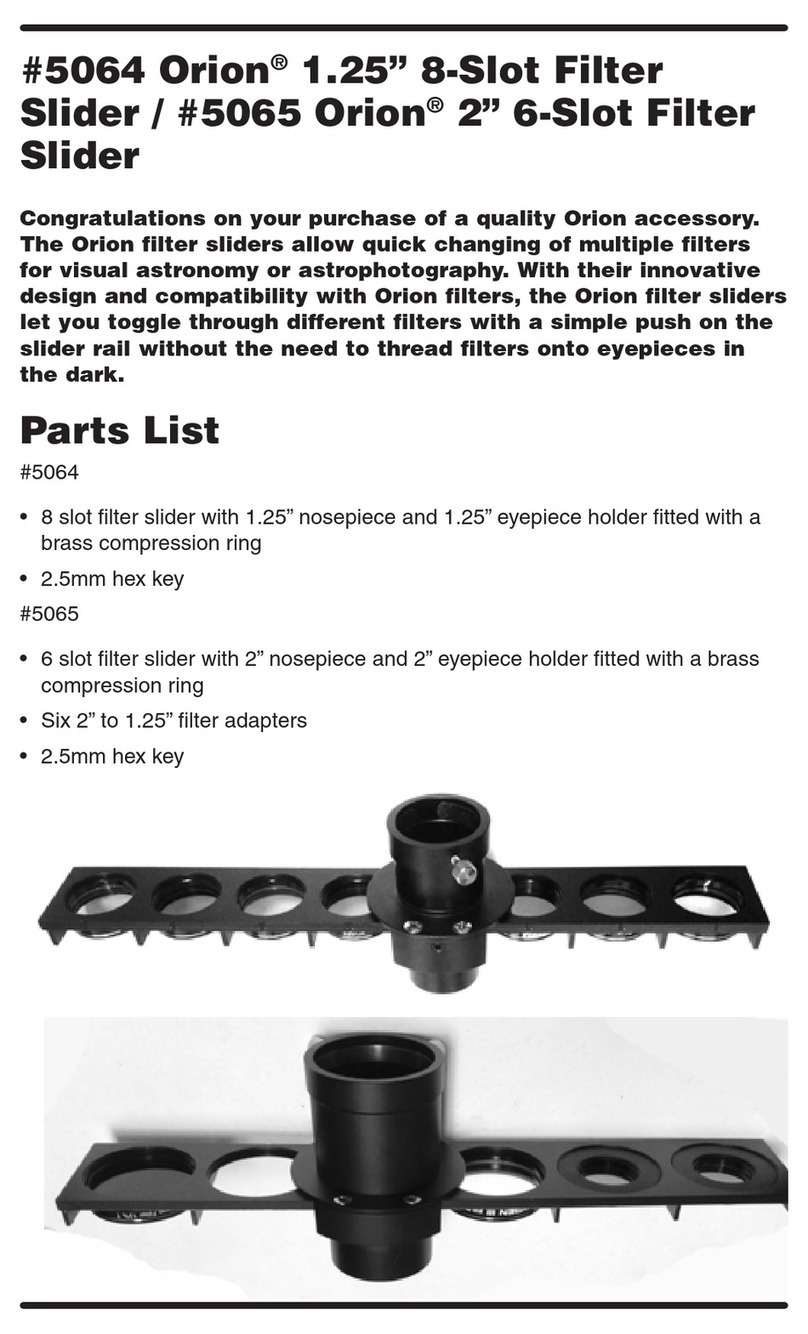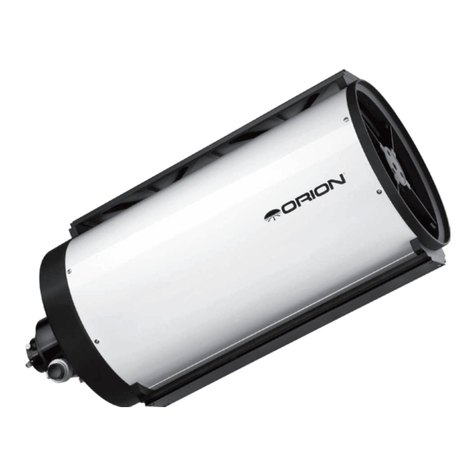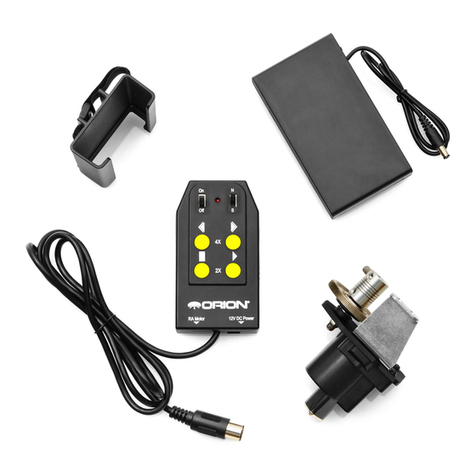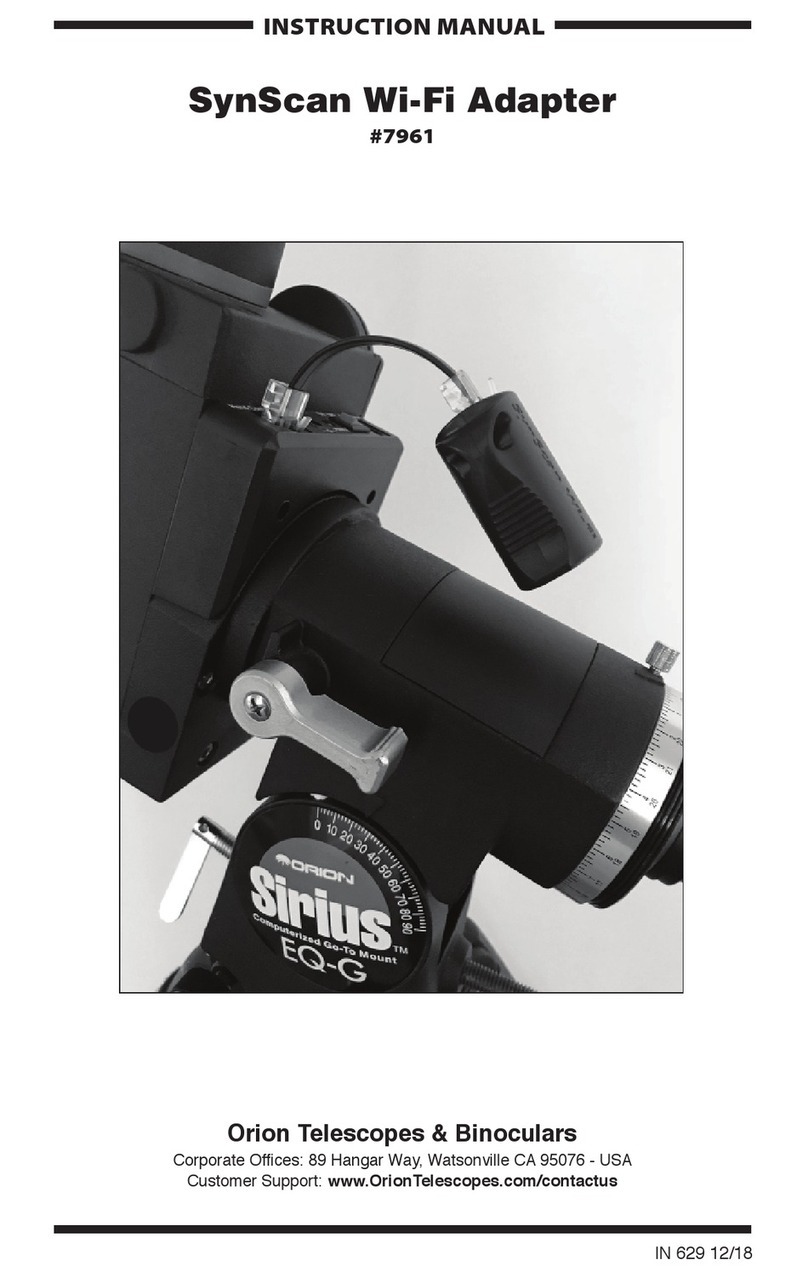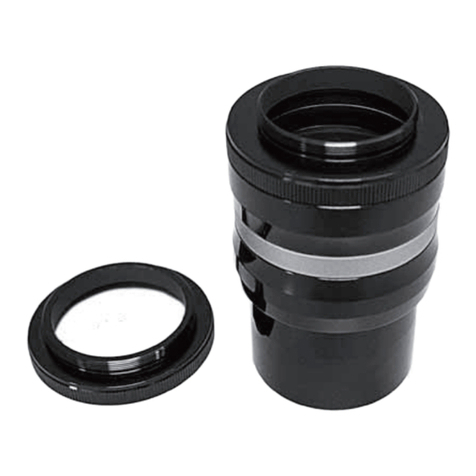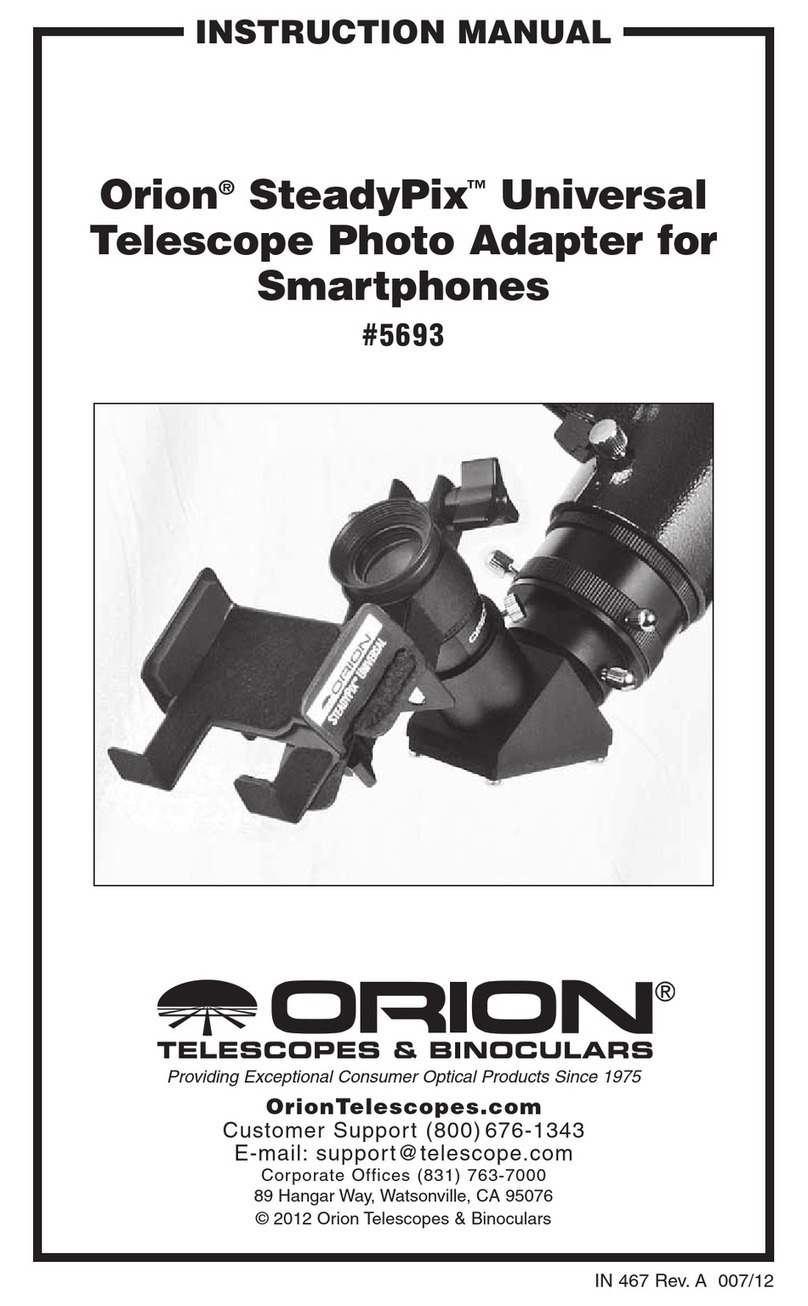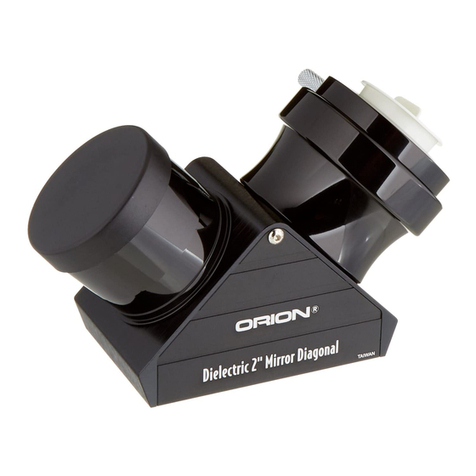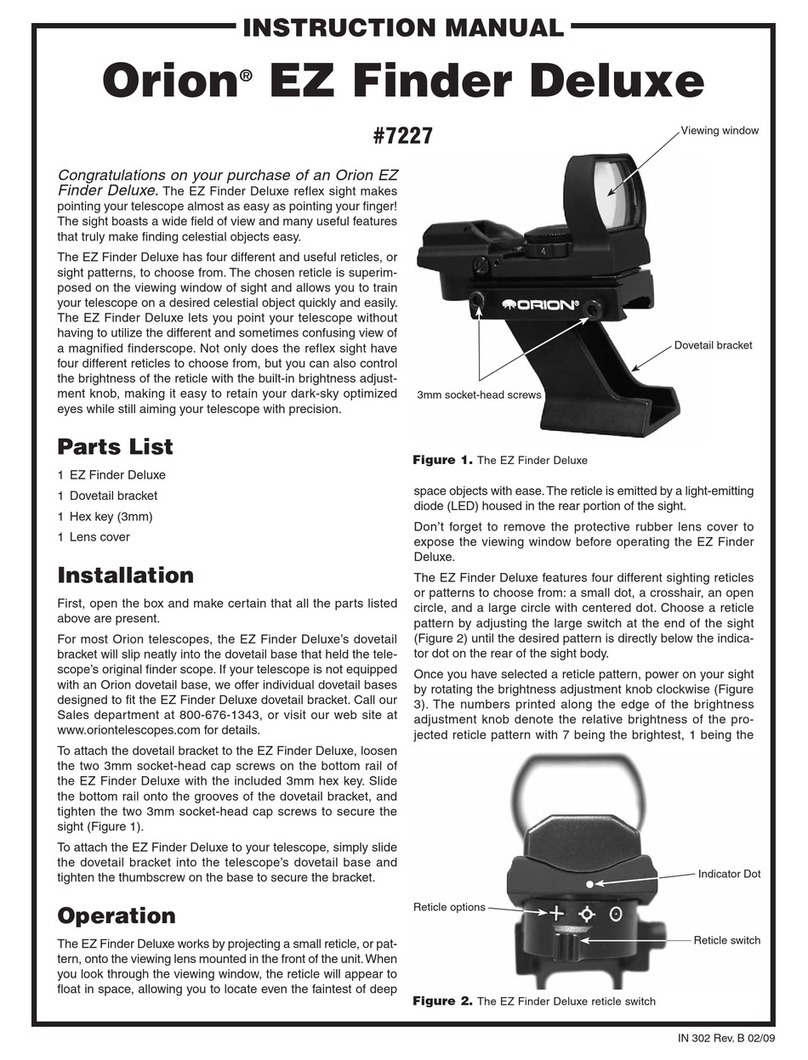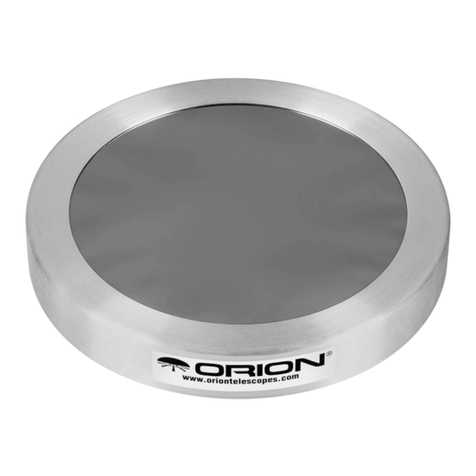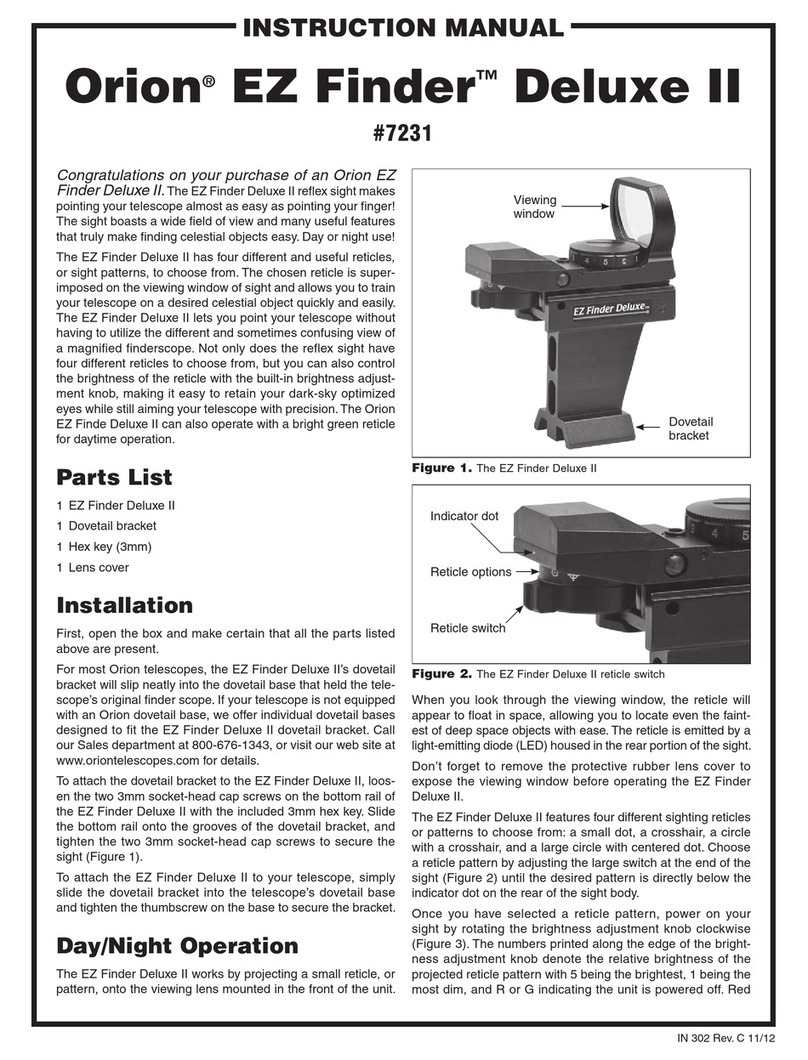
8
see if that point is centered in the field of view. If it is, the job
is done. If not, make the necessary adjustments until the two
images match up.
The finder scope alignment should be checked before every
observing session.
Magnification
Magnification, or power, is determined by the focal length of the
telescope and the focal length of the eyepiece. Magnification is
calculated as follows:
Magnification of the telescope can be changed by using differ-
ent eyepieces. For example, the SkyLine 6"Dobsonian has a
focal length of 1200mm. So, the magnification with the supplied
9mm Plossl eyepiece is:
By the same formula, when using the 25mm Plossl eyepiece,
the magnification would be 48x.
The maximum attainable magnification for a telescope is direct-
ly related to how much light its optics can collect. A telescope
with more light-collecting area, or aperture, can yield higher
magnifications than a smaller aperture telescope. The maxi-
mum practical magnification for any telescope, regardless of
optical design, is about 50x per inch of aperture. This translates
to about 300x for the SkyLine 6".
Keep in mind that as magnification is increased, the brightness
of the object being viewed will decrease; this is an inherent prin-
ciple of the physics of optics and cannot be avoided. If mag-
nification is doubled, an image appears four times dimmer. If
magnification is tripled, image brightness is reduced by a factor
of nine!
Maximum magnifications are achieved only under the most
ideal viewing conditions at the best observing sites. Most of the
time, magnification is limited to 200x or less, regardless of aper-
ture.ThisisbecausetheEarth’satmospheredistortslightasit
passes through. On nights of good “seeing,” the atmosphere
will be still and will yield the least amount of distortion. On nights
of poor seeing, the atmosphere will be turbulent, which means
different densities of air are rapidly mixing. This causes signifi-
cant distortion of the incoming light, which prevents sharp views
at high magnifications. The sharpest images will always be
achieved at lower magnifications.
Cooling the Optics
All optical instruments need time to reach “thermal equilibrium”
with the ambient air to achieve maximum stability of the lenses
and mirrors, which is essential for peak performance. When
moved from a warm indoor location to cooler air outside (or
vice-versa), a telescope needs time to equilibrate to the outdoor
temperature. The bigger the instrument and the larger the tem-
perature change, the more time will be needed.
Allow at least 30 minutes for your SkyLine Dobsonian to equili-
brate. If the scope experiences more than a 40° temperature
change, allow an hour or more. In the winter, storing the tele-
scope in a shed or garage greatly reduces the amount of time
needed for the optics to stabilize. It also is a good idea to keep
the scope covered until the Sun sets so the tube does not heat
greatly above the temperature of the outside air.
Carrying/Transporting the Telescope
Moving the SkyLine Dobsonian is easy to do. Because the
spring tensioners hold the optical tube captive on the base, the
entire telescope can be carried as one unit. This requires some
caution, however. If the telescope is lifted improperly, the front
of the tube could swing down and hit the ground. First, point the
optical tube straight up (vertical). Remove any eyepieces from
the telescope and optional eyepiece rack, and place them in an
eyepiece case. Grasp the handle on the front of the base with
one hand while supporting the telescope tube vertically with the
other. Now, lift the telescope from the handle. Once the tele-
scope is in the horizontal position, you can carry the entire unit
with one hand. If you wish to carry the optical tube and base
separately, simply disengage the springs by unhooking them
from the posts on the base, using the pull rings. The springs
remain captive on the telescope side bearings. Now the base
and tube are disengaged and can be transported separately.
When putting the telescope into a vehicle, common sense pre-
vails. It is especially important that the optical tube does not
knock around; this can cause the optics to become misaligned,
and could dent the tube. We recommend transporting and stor-
ing the tube assembly in a padded case for proper protection.
Finally, keep the dust cover on the front of the telescope when it
is not in use. Doing so will keep dust from accumulating on the
primary mirror.
4. Collimation
Collimation is the process of adjusting the mirrors so they are
correctlyalignedwithoneanother.Yourtelescope’sopticswere
aligned at the factory, but they could have become misaligned
during shipment. Accurate mirror alignment is important to
ensure the peak performance of your telescope, so it should be
checked regularly. Collimation is relatively easy to do and can
be done in daylight or in the field at night.
The Collimation Cap
Your Orion SkyLine 6"Dobsonian comes with a “quick collima-
tion cap,” shown in Figure 22. This is a simple cap that fits
on the focuser drawtube like a dust cap, but has a tiny hole in
the center. The collimation cap helps center your eye over the
focuser drawtube, making it easier to align the optical compo-
nents.Thewhitesurfaceandblackringonthecap’sunderside
provide a distinct visual reference that is helpful in centering the
mirror reflections.
= Magnification
Telescope Focal Length (mm)
Eyepiece Focal Length (mm)
= 133x
1200 mm
9 mm
